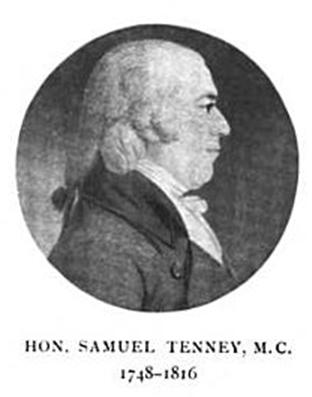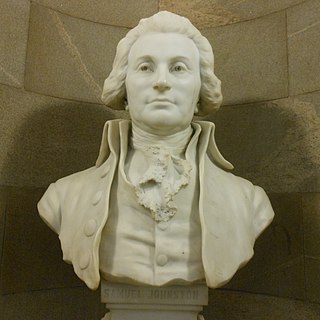Related Research Articles

The Articles of Confederation and Perpetual Union was an agreement among the 13 states of the United States, formerly the Thirteen Colonies, that served as the nation's first frame of government. It was debated by the Second Continental Congress at Independence Hall in Philadelphia between July 1776 and November 1777, and finalized by the Congress on November 15, 1777. It came into force on March 1, 1781, after being ratified by all 13 colonial states. A guiding principle of the Articles was the establishment and preservation of the independence and sovereignty of the states. The Articles consciously established a weak central government, affording it only those powers the former colonies had recognized as belonging to king and parliament. The document provided clearly written rules for how the states' league of friendship, known as the Perpetual Union, would be organized.

The Constitution of the United States is the supreme law of the United States of America. It superseded the Articles of Confederation, the nation's first constitution, in 1789. Originally comprising seven articles, it delineates the national frame and constraints of government. The Constitution's first three articles embody the doctrine of the separation of powers, whereby the federal government is divided into three branches: the legislative, consisting of the bicameral Congress ; the executive, consisting of the president and subordinate officers ; and the judicial, consisting of the Supreme Court and other federal courts. Article IV, Article V, and Article VI embody concepts of federalism, describing the rights and responsibilities of state governments, the states in relationship to the federal government, and the shared process of constitutional amendment. Article VII establishes the procedure subsequently used by the 13 states to ratify it. The Constitution of the United States is the oldest and longest-standing written and codified national constitution in force in the world.

The Federalist Papers is a collection of 85 articles and essays written by Alexander Hamilton, James Madison, and John Jay under the collective pseudonym "Publius" to promote the ratification of the Constitution of the United States. The collection was commonly known as The Federalist until the name The Federalist Papers emerged in the twentieth century.

Anti-Federalism was a late-18th-century political movement that opposed the creation of a stronger U.S. federal government and which later opposed the ratification of the 1787 Constitution. The previous constitution, called the Articles of Confederation and Perpetual Union, gave state governments more authority. Led by Patrick Henry of Virginia, Anti-Federalists worried, among other things, that the position of president, then a novelty, might evolve into a monarchy. Though the Constitution was ratified and supplanted the Articles of Confederation, Anti-Federalist influence helped lead to the passage of the Bill of Rights.
Anti-Federalist Papers is the collective name given to the works written by the Founding Fathers who were opposed to, or concerned with, the merits of the United States Constitution of 1787. Starting on 25 September 1787 and running through the early 1790s, these Anti-Federalists published a series of essays arguing against the ratification of the new Constitution. They argued against the implementation of a stronger federal government without protections on certain rights. The Anti-Federalist papers failed to halt the ratification of the Constitution but they succeeded in influencing the first assembly of the United States Congress to draft the Bill of Rights. These works were authored primarily by anonymous contributors using pseudonyms such as "Brutus" and the "Federal Farmer." Unlike the Federalists, the Anti-Federalists created their works as part of an unorganized group.

Federalist No. 10 is an essay written by James Madison as the tenth of The Federalist Papers, a series of essays initiated by Alexander Hamilton arguing for the ratification of the United States Constitution. It was first published in The Daily Advertiser on November 22, 1787, under the name "Publius". Federalist No. 10 is among the most highly regarded of all American political writings.

Federalist Paper No. 54 is an essay by James Madison, the fifty-fourth of The Federalist Papers. It was first published by The New York Packet on February 12, 1788 under the pseudonym Publius, the name under which all The Federalist papers were published.
The Federal Farmer was the pseudonym used by an Anti-Federalist who wrote a methodical assessment of the proposed United States Constitution that was among the more important documents of the ratification debate. The assessment appeared in the form of two pamphlets, the first published in November 1787 and the second in December 1787.

Samuel Tenney was a United States representative from New Hampshire. Born in Byfield in the Province of Massachusetts Bay, he attended Governor Dummer Academy and graduated from Harvard College in 1772. He taught school at Andover and studied medicine, beginning practice in Exeter, New Hampshire. He was a surgeon in the Revolutionary War. He tended the wounded patriots following the Battle of Bunker Hill then for the next year served as Surgeon's Mate alongside Massachusetts troops. For the balance of the war he was a surgeon attached primarily to the 1st Rhode Island Regiment. He was present at the surrenders of Burgoyne and Cornwallis; encamped at Valley Forge, Pennsylvania, during that fierce Winter 1777/78; was designated Acting Surgeon General of the Army upon general orders of General George Washington; and then returned to Exeter at the close of the war where he took up politics and other scholarly pursuits. He was a delegate to the State constitutional convention in 1788 and a judge of probate for Rockingham County from 1793 to 1800. He was secretary of the New Hampshire Medical Society and commissioned Paul Revere to produce the first engraving of that organization's seal. Used the pseudonym "Alfredus" to publish commentary as part of public debate over the design and ratification of the U.S. Constitution. He was elected a Fellow of the American Academy of Arts and Sciences in 1791, and was elected a member of the American Antiquarian Society in 1815.

The Virginia Ratifying Convention was a convention of 168 delegates from Virginia who met in 1788 to ratify or reject the United States Constitution, which had been drafted at the Philadelphia Convention the previous year.

Merrill Monroe Jensen was an American historian, whose research and writing focused on the ratification of the United States Constitution. His historical interpretations are generally considered to be of the "Progressive School" of American history, the most famous exponent of which was Charles A. Beard. Jensen was a professor of history at the University of Washington (1935–1944), where he was editor of Pacific Northwest Quarterly, and the University of Wisconsin–Madison (1944–1976).

Jonathan Elliot (1784–1846) was a 19th-century American historian who produced two influential collections of documents connected with the early American republic. The first was a five-volume collection entitled The Debates in the Several State Conventions on the Adoption of the Federal Constitution, which encompassed the time between the 1787 Constitutional Convention and the opening of the government under the newly ratified constitution in 1789. This work for many years was the most complete source of primary material from this period. It was first published between 1827 and 1830, and issued in a revised version in 1861 after Elliot's death. This art of historical documentation of the Constitution's ratification was expanded by the Documentary History of the Ratification of the Constitution and the Bill of Rights, 1787-1791, launched in 1976 by the historian Merrill Jensen and continued by his students John P. Kaminski, Gaspare J. Saladino, Richard Leffler, and Charles Schoenleber.

The drafting of the Constitution of the United States began on May 25, 1787, when the Constitutional Convention met for the first time with a quorum at the Pennsylvania State House in Philadelphia, Pennsylvania to revise the Articles of Confederation. It ended on September 17, 1787, the day the Frame of Government drafted by the convention's delegates to replace the Articles was adopted and signed. The ratification process for the Constitution began that day, and ended when the final state, Rhode Island, ratified it on May 29, 1790.

The Perpetual Union is a feature of the Articles of Confederation and Perpetual Union, which established the United States of America as a political entity and, under later constitutional law, means that U.S. states are not permitted to withdraw from the Union.
The Independent Journal, occasionally known as The General Advertiser, was a semi-weekly New York City journal and newspaper edited and published by John McLean and Archibald McLean in the late 18th century. The newspaper's content included contemporary essays and notices.

John Tyler Sr. was an American lawyer, planter, politician and judge who served in the Virginia House of Delegates and became 15th Governor of Virginia and later United States district judge of the United States District Court for the District of Virginia. He was the father of U.S. President John Tyler.

The 1788–1789 United States Senate elections were the first U.S. Senate elections following the adoption of the Constitution of the United States. They coincided with the election of George Washington as the first president of the United States. As these elections were prior to the ratification of the Seventeenth Amendment in 1913, senators were chosen by state legislatures.

The Hillsborough Convention, was the first of two North Carolina conventions to ratify the United States Constitution. Delegates represented 7 boroughs and 59 counties, including six western counties that became part of Tennessee when it was created in 1796. They met in Hillsborough, North Carolina from July 21 to August 4, 1788 to deliberate and determine whether to ratify the Constitution recommended to the states by the General Convention that had been held in Philadelphia the previous summer. The delegates had won their seats through special elections held in March 1788, as mandated by the North Carolina General Assembly. Governor Samuel Johnston presided over the Convention. The Hillsborough Convention was dominated by anti-Federalists, and North Carolina did not ratify the Constitution until the Fayetteville Convention, which met a year later.
The Federal Processions of 1788 were large municipal celebrations of the ratification of the United States Constitution that took place in Philadelphia and New York City, though other types of celebrations took place throughout the states. New Hampshire was the ninth state to ratify the Constitution, on 21 June 1788, thus completing sufficient ratification for the Constitution's consummation. Celebrations climaxed with the Federal Processions of July 1788.
The New York Circular Letter was a solution reached in a controversy between Federalists and Anti-Federalists over ratification of the United States Constitution. The compromise built on earlier deals like the Massachusetts Compromise to call for the use of the Convention provision written into the newly ratified Constitution in order to get the amendments demanded by New York and other states.
References
- ↑ Kaminski and Saladino, XV: p. 181.
- 1 2 3 4 5 6 7 8 9 10 11 Main, Jackson Turner. The Antifederalists: Critics of the Constitution, 1781-1788. Chapel Hill: The University of North Carolina Press. 1961, p. 287.
- ↑ Kaminski and Saladino, XV: p. 51.
- ↑ Kaminski and Saladino, XIII: p. 412.
- ↑ Kaminski and Saladino, XV: p. 120.
- ↑ Kaminski and Saladino, XIII: p. 489.
- ↑ Kaminski and Saladino, XIII: p. 376.
- ↑ Kaminski and Saladino, XIII, p. 529.
- ↑ Kaminski and Saladino, XIV: pp. 15-6.
- ↑ Wood, Gordon S. "The Authorship of the Letters from the Federal Farmer." The William and Mary Quarterly, 3rd Ser., Vol. 31, No. 2. (Apr., 1974), pp. 299-308.
- ↑ Kaminski and Saladino, XV: p. 454.
- ↑ Kaminski and Saladino, XIII: p. 561.
- ↑ Kaminski and Saladino, p. 90.